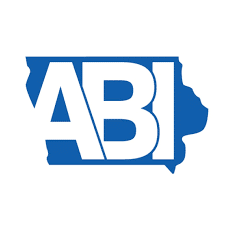Transitions: Corporate taxes are flexible

Baseball umpires all learn the same rules about calling strikes. Then a game starts, and the home plate ump calls them according to whether he feels like crouching all the way down or only bending over a little bit. Likewise, governments set corporate tax rates after an appropriate amount of high-level cogitation. Then company accountants make those numbers dance.
In its most recent annual report to the Securities and Exchange Commission – it’s like mailing a Christmas letter to someone who can send you to prison – West Des Moines-based American Equity Investment Life Holding Co. said its “effective tax rates were 34.2 percent, 20.5 percent and 79.3 percent for 2010, 2009 and 2008, respectively.”
Ups and downs like these are what make the Rocky Mountains so popular.
At Meredith Corp., things run more predictably. According to the Des Moines-based communications company, its effective tax rates were 36.6 percent in fiscal 2010, 34 percent in fiscal 2009 and 39.1 percent in fiscal 2008.
And for the kind of payments that keep a company from yelling too loudly at tax protest rallies, check out Principal Financial Group Inc. The Des Moines-based financial services company reported that its “effective income tax rates were 15 percent and 13 percent for the years ended December 31, 2010 and 2009, respectively.”
Nice tax rate if you can get it. This illustrates why Principal is in the financial services business. Over at Meredith, where they publish magazines, they probably know how to get terrific deals on punctuation marks and cover blurbs.
So when we quibble about setting corporate tax rates on the national and state levels, it’s important to remember that we’re not determining what companies actually will pay. We’re just offering a helpful guideline. We’re just saying, if it’s the morning of April 15, all of your finance people are out sick, and nobody knows the computer password, just grab a calculator, multiply your income by 0.35 and make out a check.
Still, even fake numbers have both fans and detractors. The New York Times pointed out that if Japan drops its rate, the United States soon might have the highest official corporate tax rate in the world. Either way, you’re not going to see people in business suits yelling “USA! USA!” on television.
“Topping out at 35 percent, America’s official corporate income tax rate … is nearly triple Ireland’s and 10 percentage points higher than in Denmark, Austria or China,” the Times said.
However, “by taking advantage of myriad breaks and loopholes that other countries generally do not offer,” our companies pay only a little more or, in some cases, a lot less than companies in other industrial countries. “A Government Accountability Office study released in 2008,” the Times reported, “found that 55 percent of United States companies paid no federal income taxes during at least one year in a seven-year period it studied.”
Combine that with the fact that somewhere around half of American families aren’t paying any income taxes, and it’s clear why taxes seem so high. Only a handful of us are picking up the tab. I’ll cover the food stamps, if you’ll get the Tomahawk cruise missiles.
All of this could change if we lowered rates and cut loopholes, and we might still pull in the same amount of revenue. But, you know, we’re kind of hooked on loopholes.
Umpires are taught that the first baseman’s foot absolutely must be in contact with the bag for a runner to be called out. But touching second base on a double play? Loophole.
Jim Pollock is the editor of the Des Moines Business Record. He can be reached by email at jimpollock@bpcdm.com










